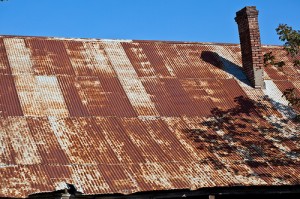How Rust Can Cause Roof Damage If Left Unattended
Rust is a perennial problem for structures with iron roofs. All metals containing iron are susceptible to rust when exposed to air and water. Rust is actually a kind of corrosion that applies specifically to metals with iron content. Roof damage is always the result of rust.
It is advisable to keep a regular inspection of your roof as well as conduct periodic repair and recoating with paint and primer if necessary. A metal roof that is not properly maintained has a significantly shortened lifespan. Rust has several effects on metals, all of which are not good.
Rust Produces Holes on Sheet Metal
You often see the effect of rust on metal through bodies of poorly-maintained and junked cars showing patches of holes eaten by rust. The same effect can be seen on roofs. Should you fail to properly protect your roof by scraping off rusted metal and coating the roof with paint, your roof will develop holes. Holes are the passageway through which rainwater goes inside the house. If left untreated, water could ultimately damage the integrity of the whole structure.
Rust Weakens Metal Objects
Rust is usually seen as an orange powder on the surface of corroding metals. Rust, in fact, replaces the strong steel or iron with this flakey powder. Since rust has considerably less mechanical strength than the iron or steel that it replaced, it weakens the whole object. As a result, the strength of the entire object is compromised by the presence of rust. A roof weakened by rust in turn affects the whole structure on which it is a part of, thereby weakening the whole building.
Rust Expands Affected Parts
Rust possesses more volume than iron such that its formation on the affected area will push away adjacent or adjoining parts. This development, called rust-smacking, renders structures susceptible to damage caused by gravity, impact, movement and the weather. A whole bridge in Pennsylvania collapsed from this process when its bolts on the central base were heavily corroded by rust.
Metals Become Stuck When Rust Occurs
It becomes harder for two sliding metal parts to interact with one another because of the presence of rust. The basic examples of this are rusty nut and bolt. The more rust there is the harder it is to turn the nut around the bolt. Applying strong force on the rusty metal object could potentially damage it and render it unusable. Always observe caution when repairing metal roofs with rusty bolts and nails. You may inadvertently create holes and cracks by forcibly separating rusted parts.
